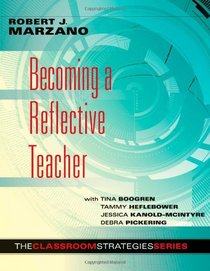Search -
Becoming a Reflective Teacher (Classroom Strategies)
Becoming a Reflective Teacher - Classroom Strategies
Author:
Becoming a Reflective Teacher is a practical guide for educators who wish to hone their teaching strategies. Just as successful athletes must identify personal strengths and weaknesses, set goals, and engage in focused practice to meet their goals, author and educator Robert Marzano asserts that teachers must also examine their practices, set gr... more »
Author:
Becoming a Reflective Teacher is a practical guide for educators who wish to hone their teaching strategies. Just as successful athletes must identify personal strengths and weaknesses, set goals, and engage in focused practice to meet their goals, author and educator Robert Marzano asserts that teachers must also examine their practices, set gr... more »
ISBN-13: 9780983351238
ISBN-10: 0983351236
Publication Date: 2/28/2012
Pages: 256
Rating: ?
ISBN-10: 0983351236
Publication Date: 2/28/2012
Pages: 256
Rating: ?
0 stars, based on 0 rating
Publisher: Marzano Research Laboratory
Book Type: Perfect Paperback
Members Wishing: 1
Reviews: Amazon | Write a Review
Book Type: Perfect Paperback
Members Wishing: 1
Reviews: Amazon | Write a Review
Genres:




